Located in the city of Zlatoust in the Ural Mountains — which itself has been involved in weapons production since the time of Peter the Great — A&R is one of the largest knife manufacturers in Russia. Its entire lineup is made in-house using a variety of steels, from 95×18 (the Russian equivalent of 440C, which adds .2% titanium to the alloy) to a proprietary Damascus called “Zladinox.” The chief knifemaker at A&R is Vladimir Gerasimov, an ABS Master Bladesmith.
If you, a mere mortal who lives on this side of the globe, desire an A&R knife, you have one choice only to buy it. That’s Russianblades.com, the exclusive dealers of A&R knives in the United States. RussianBlades.com also represents half a dozen other knife companies in Russia.
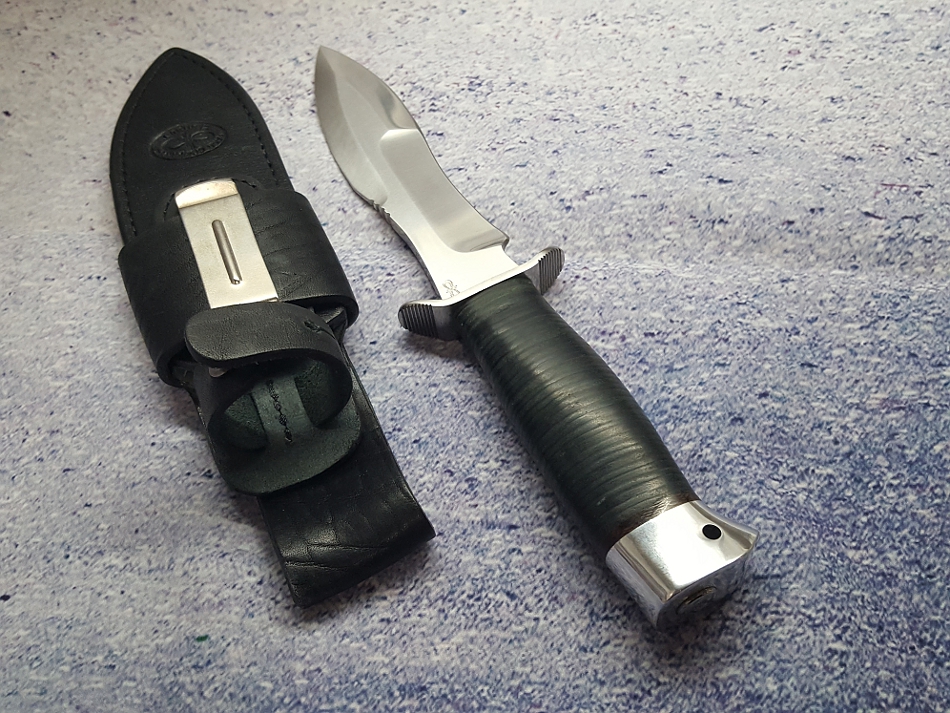
That brings us to the A&R “Oprichnik,” ostensibly the civilian version of the FSB (KGB) special forces knife. Described as a tactical, military, hunting, bushcraft, and survival knife, the Oprichnik is available with handles of leather, birch bark, walnut, and karelian birch. Each knife is individually numbered and ships with a leather sheath.
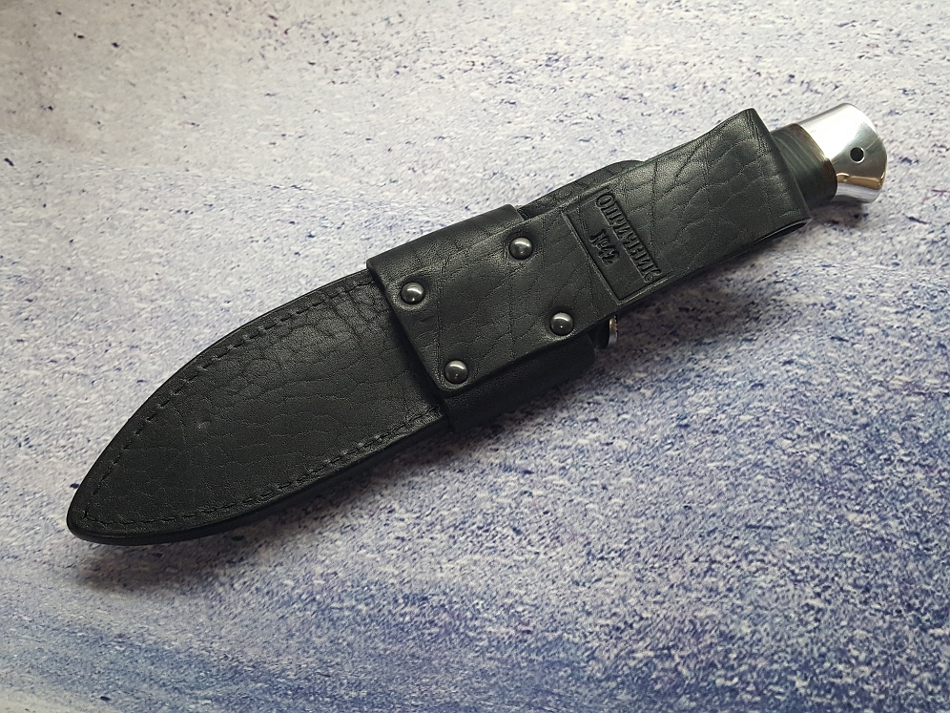
The knife is 11 inches overall with a blade just over six inches long (and roughly 1.3 inches wide, of blade stock a hair under a quarter of an inch). Blade steel is 95X18, heavily polished. The edge type is described as a spear point, but a friend called it the “Tom Brownski Trakker.” The influence of the multiple grinds on the Tom Brown Tracker is unmistakable, including the concave section intended for scraping and fine work. Given that the Oprichnik is marketed as an all-purpose survival and fighting blade, I have to assume this is by design.
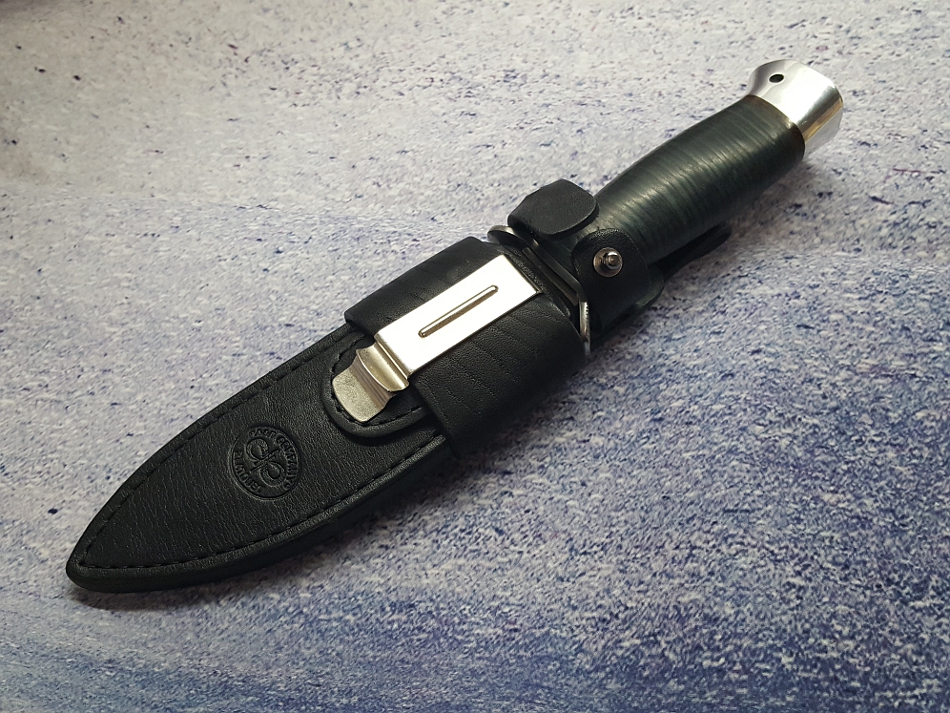
My Oprichnik has a stacked leather handle that matches the black leather sheath. It affords very good traction and fills my large hands nicely. The only drawback to stacked leather handles is that they tend to shrink overtime, which sometimes leads to the guard loosening. My old Camillus Ka-Bar style knife suffered badly from this problem. Time will tell if age shrinks the leather of the Oprichnik, but if I had to guess, I would say it likely will be okay. It is contoured and thickly built in a way that old Ka-Bar style knife was not.
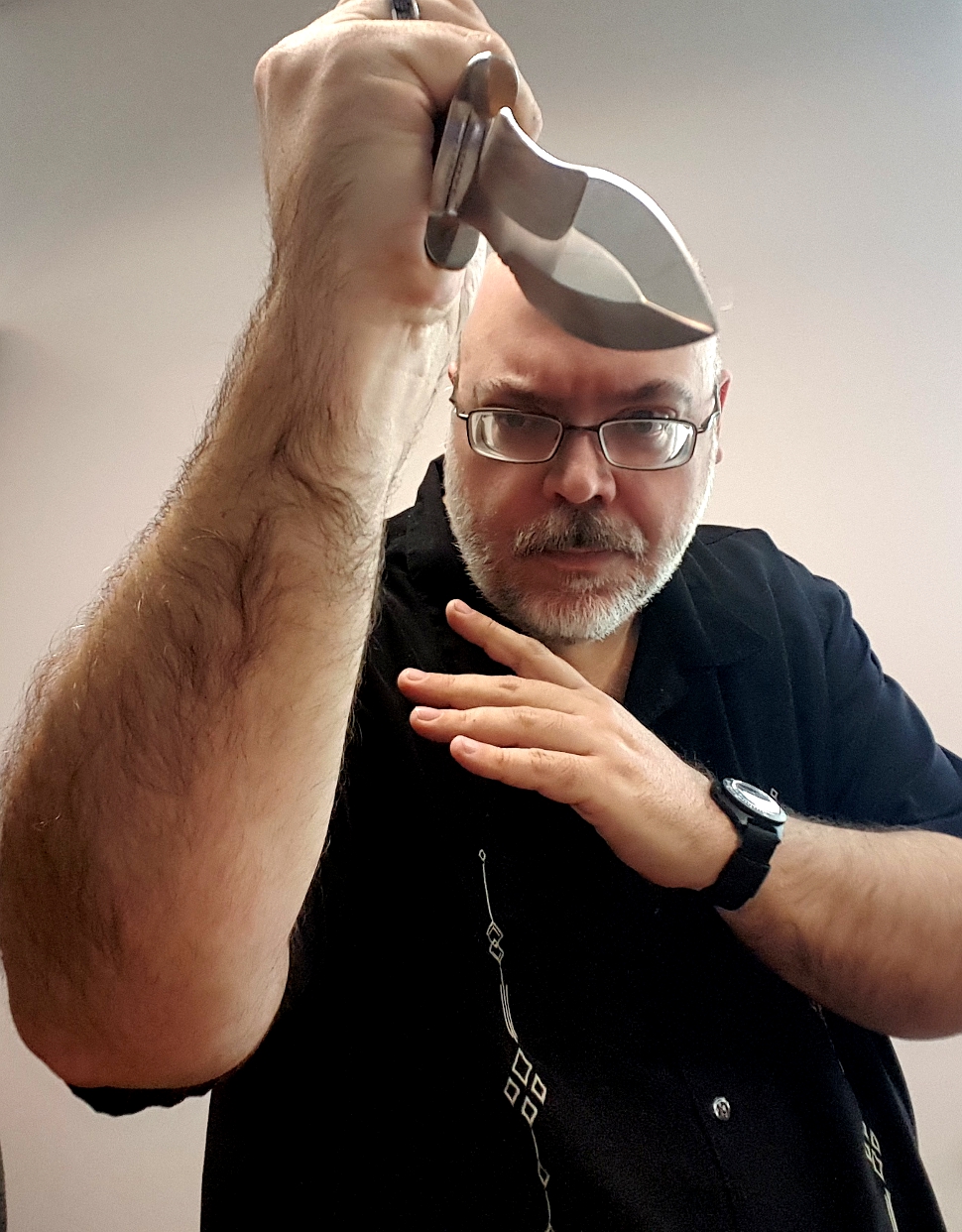
The knife exhibits, for that matter, the same tendency to overbuild that the Russians show in their small arms. ComBloc weapons like the old Makarovs and Kalashnikov rifles were always heavier than they needed to be. The result was great strength and durability. While the Oprichnik does not seem unduly heavy, it is substantial. It feels robust in the hand, but light enough to move quickly and wield effectively.
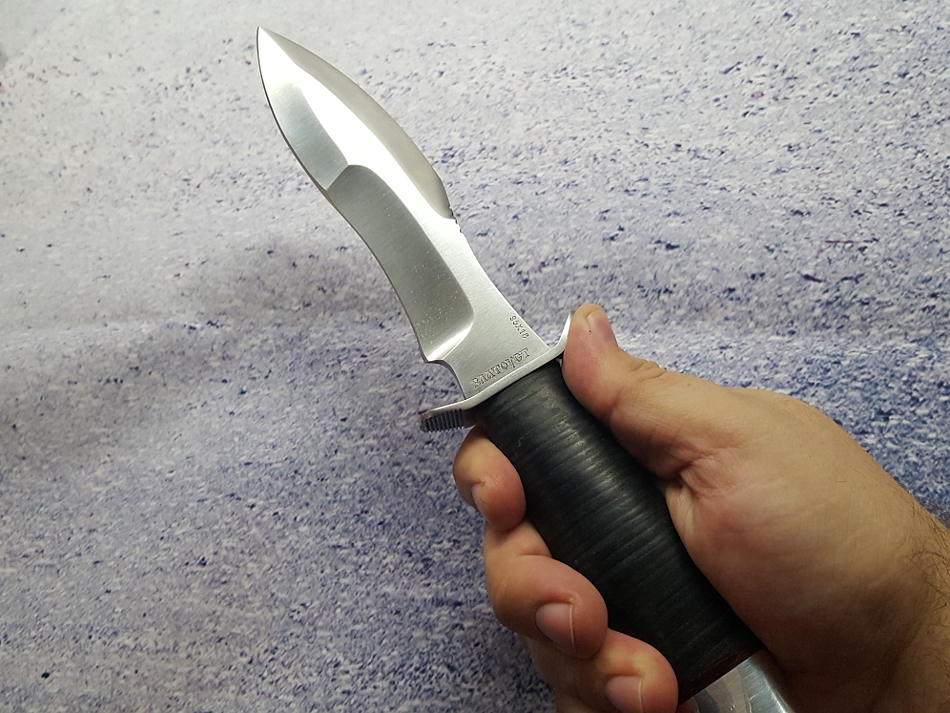
The leather sheath is of good quality and a bit unusual by Western standards. It has an integral belt clip for use as an IWB sheath, but the only closure is a peg-and-hole arrangement on the retaining strap. An included leather frog, held in place by the metal clip, can be added to make the whole thing a belt knife. My Oprichnik also came with a padded carrying case, although I’ve no idea if this is standard or not.
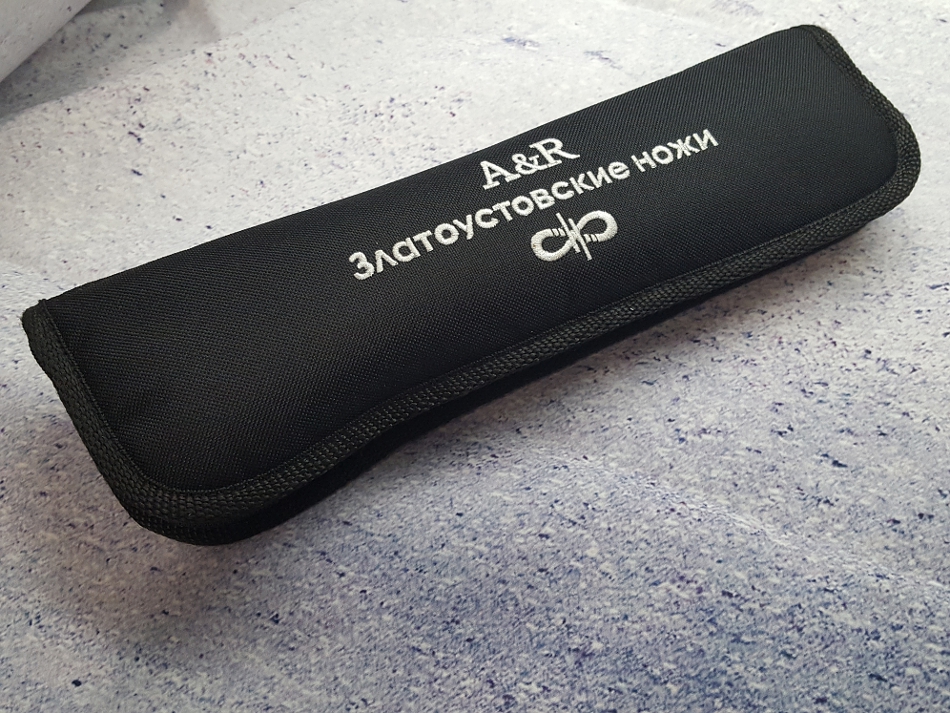
The double guard of the knife sits against the retaining strap even when the strap is open, which keeps the knife from falling out with the strap undone. It is reasonably comfortable for IWB carry, at least for a knife this size, and the draw is adequately smooth (though not perfect, given that this sheath is trying to be all things to all people). I think the sheath design is part of the Russian charm of this knife. If it were exactly like any tactical blade available in the States, there wouldn’t be much point to it.
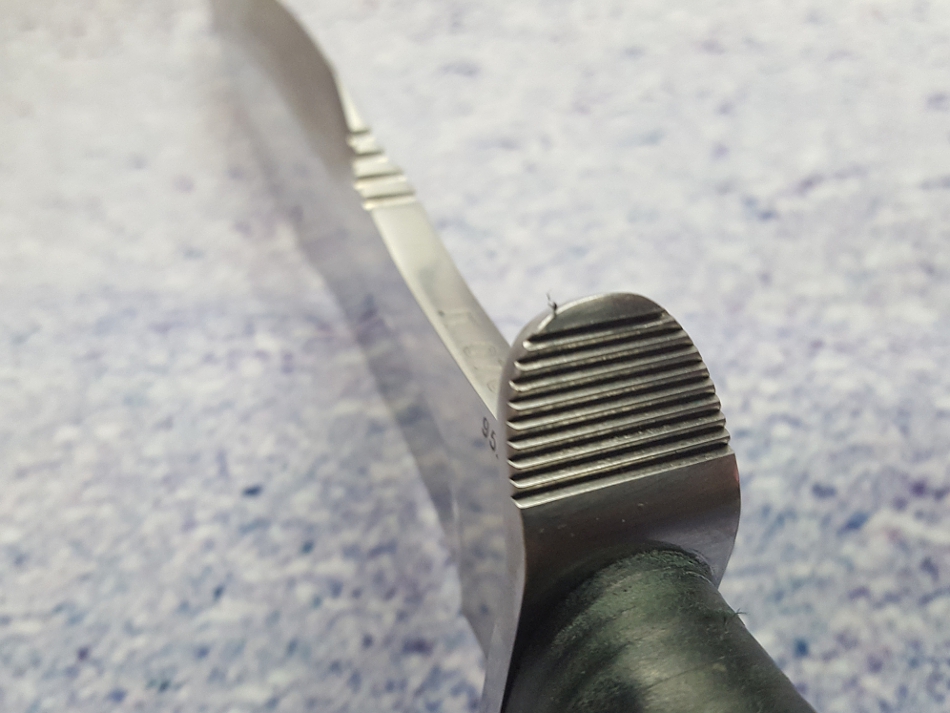
The butt cap (with a prominent tang nut, which I imagine means the knife has a rat-tail tang extending through the rows of leather washers that form the handle) is nicely polished and very heavy. It would make a great “skull crusher” for pommel strikes. The grooves on the double guard make a great thumb ramp. There is also a secondary section of grooves cut just below the false edge (which is not sharpened), presumably for choking up on the blade for fine work.
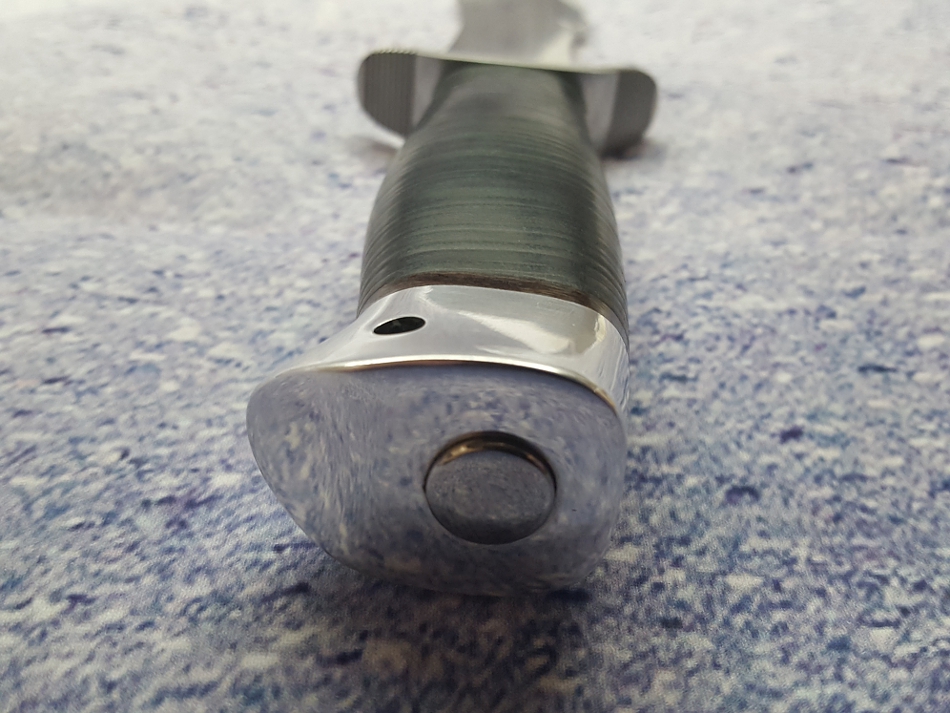
The spear point blade has what is in effect two sections, a convex grind for the primary belly and then a concave grind below that. The cutting edge itself, however, is simply sharpened in an unbroken path through that recurve on both sides of the blade. The result is that the edge cuts nicely, while the blade provides tactile feedback as you dig deeper into the work. It swells where the two curves meet, so when you reach that depth past the convex primary grind, there is slightly more resistance before you reach the concave grind.
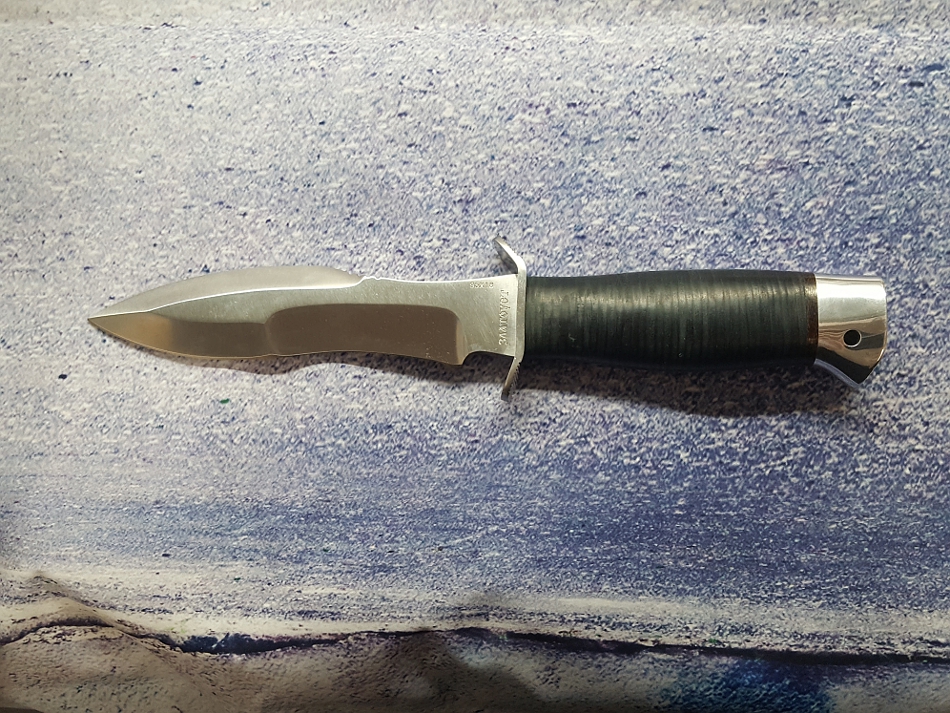
There’s nothing good or bad about this; it is simply… different, and cutting deeply with the Tom Brown Tracker feels much the same (depending on whose interpretation of that knife you are using). The Oprichnik cuts and slices nicely while penetrating better than I expected. The point of balance is right at the guard or just above it, because the handle and butt cap are fairly hefty.
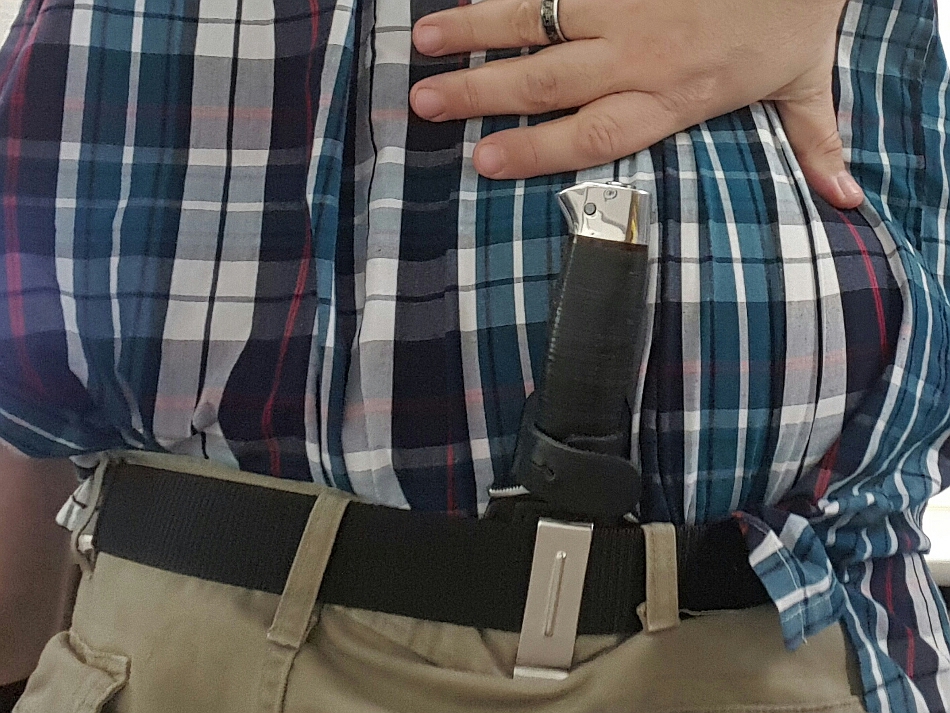
The Russian word, хорошо, or khorosho, has been bastardized to “horrorshow” (as bastardized by A Clockwork Orange author Anthony Burgess). It means “good,” basically, and the Oprochnik is about as horrorshow as a knife of this type gets. As field and fighting blades go, this knife leans toward the heavy side, yet is easy to wield. The result is a tool that makes an able combat and field knife. Real horrorshow, indeed.